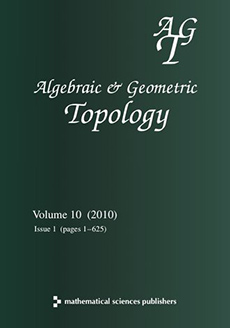Abstract
Framed flow categories were introduced by Cohen, Jones and Segal as a way of encoding the flow data associated to a Floer functional. A framed flow category gives rise to a CW complex with one cell for each object of the category. The idea is that the Floer invariant should take the form of the stable homotopy type of the resulting complex, recovering the Floer cohomology as its singular cohomology. Such a framed flow category was produced, for example, by Lipshitz and Sarkar from the input of a knot diagram, resulting in a stable homotopy type generalising Khovanov cohomology.
We give moves that change a framed flow category without changing the associated stable homotopy type. These are inspired by moves that can be performed in the Morse–Smale case without altering the underlying smooth manifold. We posit that if two framed flow categories represent the same stable homotopy type then a finite sequence of these moves is sufficient to connect the two categories. This is directed towards the goal of reducing the study of framed flow categories to a combinatorial calculus.
We provide examples of calculations performed with these moves (related to the Khovanov framed flow category), and prove some general results about the simplification of framed flow categories via these moves.
Citation
Andrew Lobb. Patrick Orson. Dirk Schütz. "Framed cobordism and flow category moves." Algebr. Geom. Topol. 18 (5) 2821 - 2858, 2018. https://doi.org/10.2140/agt.2018.18.2821
Information





